——————————————————————————————————————-
Hold a piece of notebook paper up to your guitars fretboard & turn the page so the lines and spaces match up with the guitars frets and ridges. Follow this layout labeling the columns with the fret numbers you’re going to use. Most popular music only plays around 3-5 frets at a time so there’s no need to layout the entire board.

Draw shapes inside the columns to represent note types. Squares are fretted notes. Circles show open notes. Triangles demonstrate hammers and pulls. Diamonds represent harmonics.

The string-stems coming off of these shapes show you which strings to play.
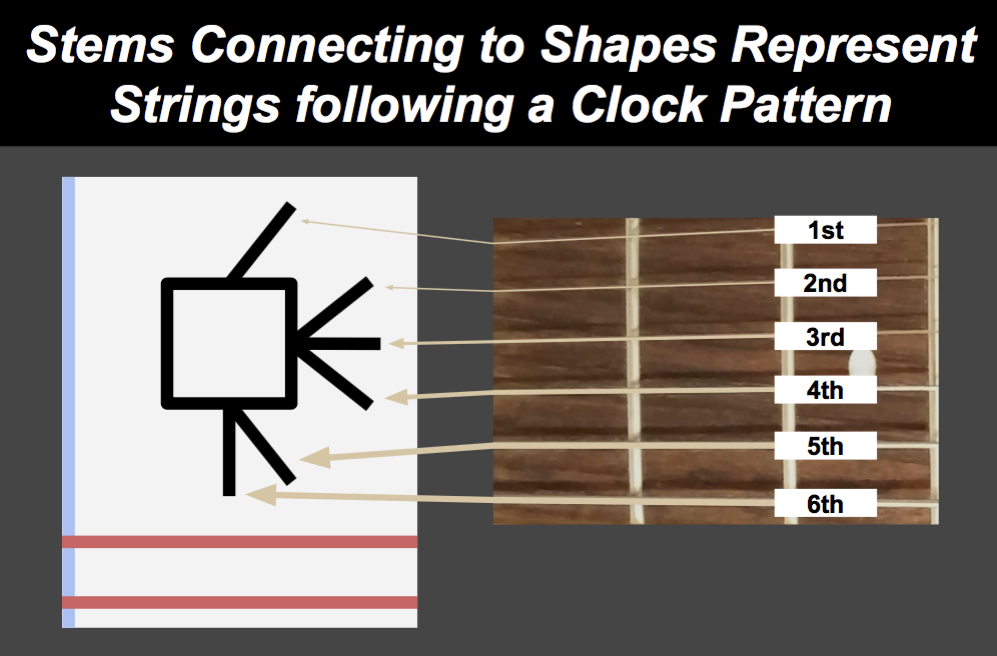 The system utilizes a 12-hour clock format; 1 o’clock = the 1st string, 2 o’clock = the 2nd string, and so on, up to 12 strings.
The system utilizes a 12-hour clock format; 1 o’clock = the 1st string, 2 o’clock = the 2nd string, and so on, up to 12 strings.

Additional variations are indicated by the shapes positioning and any string-stem extensions (showing fingering/mutes/pick direction/etc…).
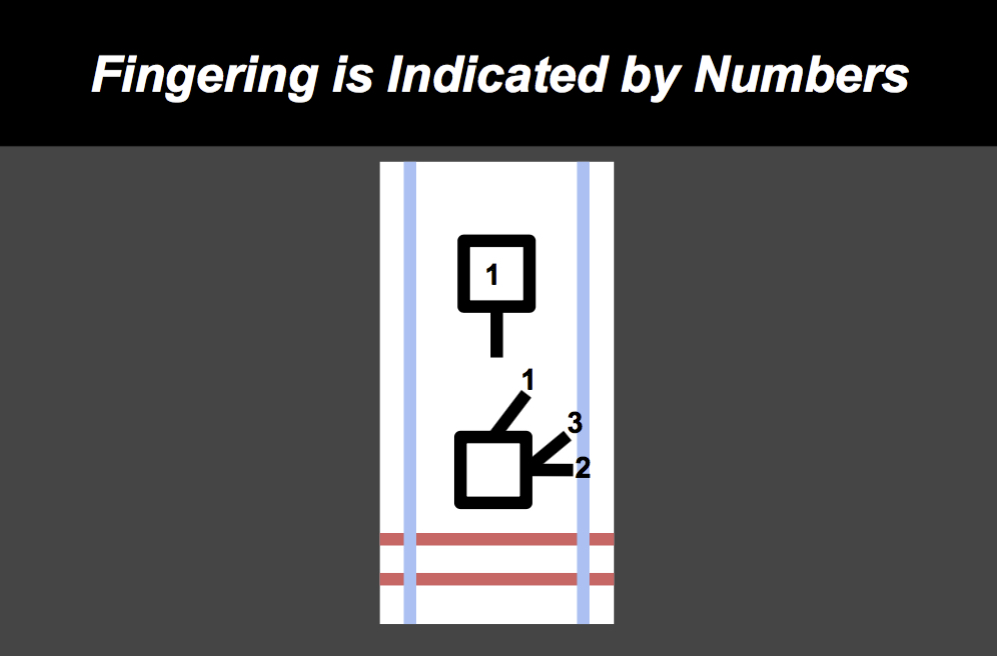

To write music: draw shapes, with string-stems, inside the fret-columns you intend to use.

Time passes from the bottom to the top of the columns.

A line coming off the top of a shape represents a sustained note. The length of time a note is held is measured based on the value assigned to each beat segment and the placement of the note in relation to those segments.
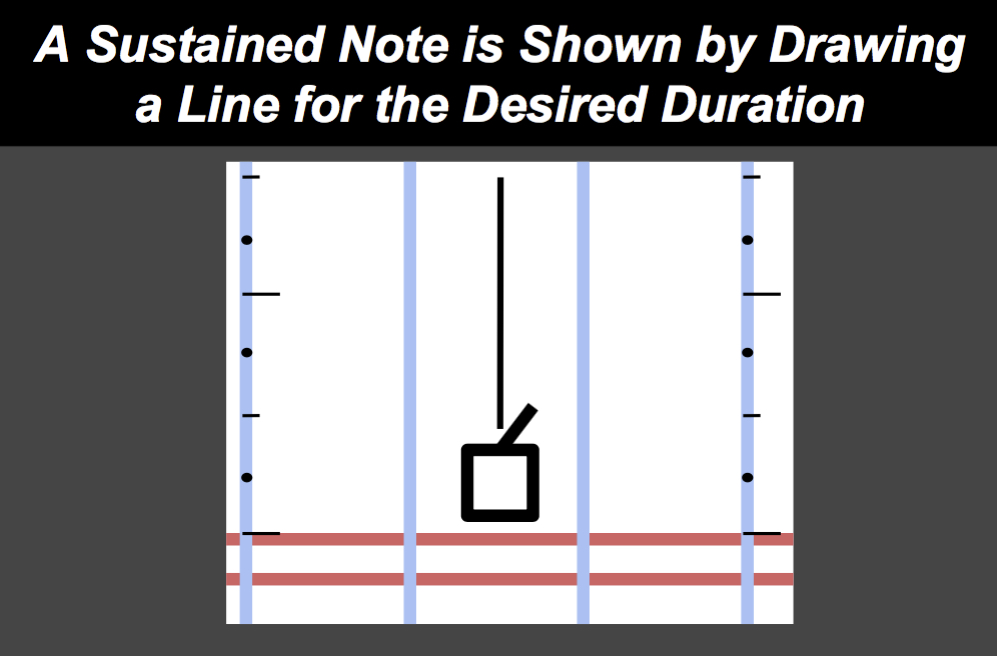
Every column has a center pitch-axis used to measures bends.

Fluctuations in pitch are demonstrated by line deviations from the center of this axis. Pitch variations are all measured over time across beat lines and along pitch points in half step increments.

Each column border is a representation of the fret ridges on the fingerboard. Slides are shown with a line that crosses the column border over to the new position.
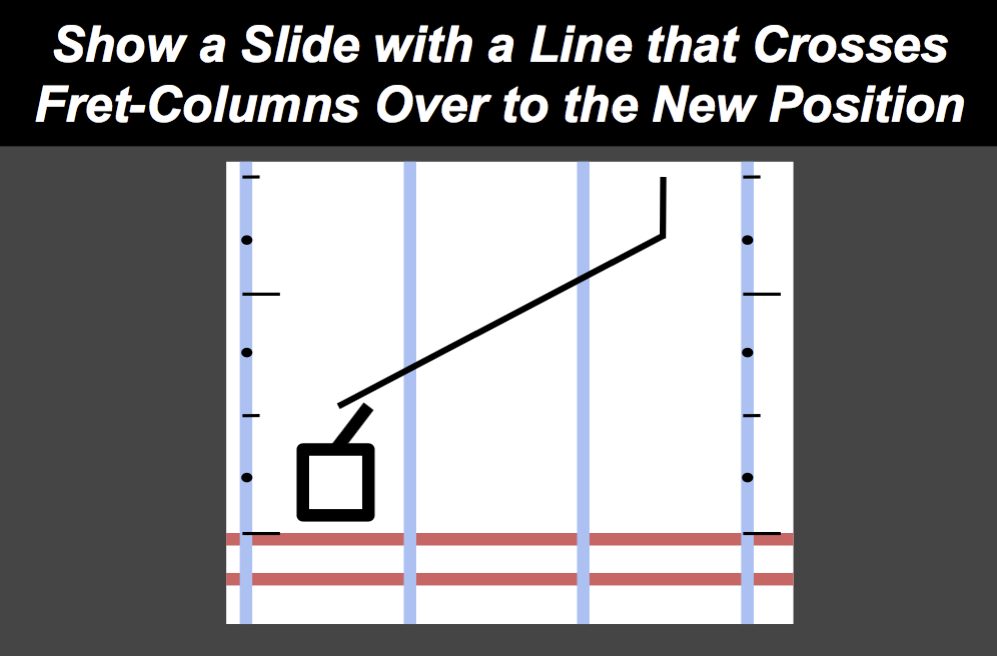
Columns are grouped into passages designated by a division line. Once you reach the top of the page you would then continue at the bottom of the page, with the next passage over.
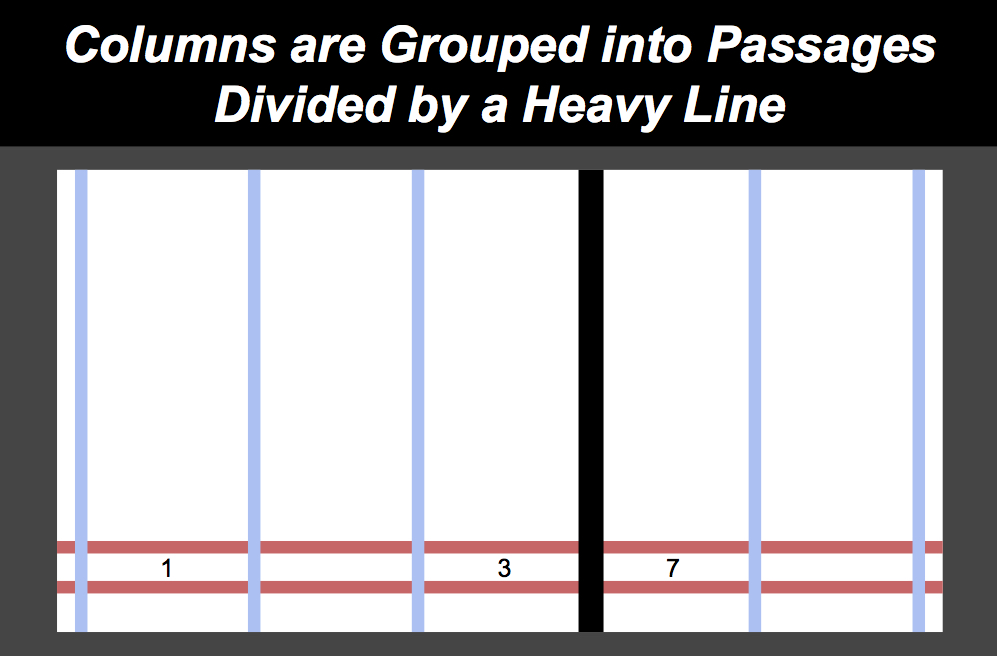
You can write symecord for either hand by mirroring the fretboards layout to the left or right. If you prefer to use rows instead of columns, more information can be found on the formats page.